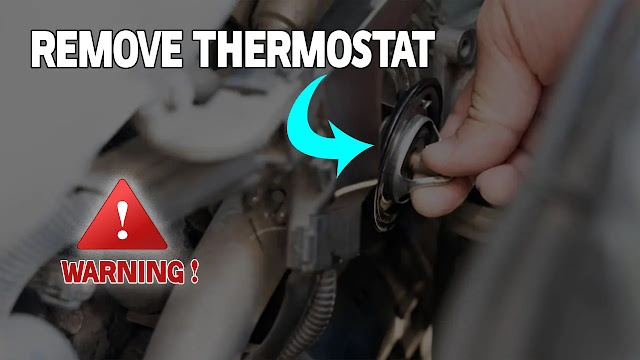The Perils of Removing Your Car Engine’s Thermostat
The thermostat is a crucial component in your car’s engine system, playing a vital role in regulating the engine temperature. Contrary to common beliefs, removing your car’s thermostat can lead to severe consequences, affecting fuel efficiency and engine lifespan. In this article, we will explore the benefits of retaining the thermostat and explain why removing it should be avoided.
A. The Role of the Thermostat in Engine Performance:
The thermostat regulates the flow of coolant to maintain the engine temperature within its optimal range, usually between 195°F to 215°F (90°C to 102°C). Removing the thermostat disrupts this delicate balance, resulting in a series of undesirable outcomes.
B. Issues of Excessive Engine Temperature:
Many car owners believe that removing the thermostat can solve the problem of engine overheating. While this might seem logical, the truth is quite the opposite. Without the thermostat, coolant flows rapidly, preventing adequate heat absorption from the engine, exacerbating overheating issues instead of resolving them. Proper diagnosis is essential to address the root cause of engine temperature increase.
1- Fuel Efficiency Deterioration:
The thermostat plays a critical role in fuel efficiency. Without it, the engine often fails to reach its optimal operating temperature quickly, forcing the engine control unit to provide a richer fuel mixture. This leads to increased fuel consumption, carbon buildup, and premature catalytic converter failure. Keeping the thermostat ensures your car operates efficiently as designed.
2- Engine Lifespan at Risk:
Running the engine without reaching its recommended operating temperature due to a missing thermostat accelerates engine component wear. Additionally, the engine relies on a closed-loop operation for optimal performance, deviating from the recommended temperature range hampers this process, potentially leading to engine malfunction or even complete failure over time.
3- Ineffective Heating and Cooling:
The thermostat ensures efficient interior heating by allowing the coolant to heat up. Without it, your car’s heating system may become slow or cease to function altogether, providing an uncomfortable driving experience during colder months.
4- Check Engine Light Activation:
Modern engine control units monitor the time it takes for the engine to reach its operating temperature. The diagnostic trouble code P0128 is set if the coolant temperature sensor fails to provide the correct temperature within a specified time, triggering the « Check Engine » warning light.
C. The Purpose of the Thermostat in Your Car:
The thermostat helps maintain the engine temperature by regulating the valve that controls the flow of coolant in and out of the engine. When the engine temperature is low, the thermostat valve remains closed to keep the coolant within the engine block. This allows your car’s engine to reach operating temperature more quickly.
Once the operating temperature is reached, the thermostat valve opens, allowing hot coolant to flow to the radiator for cooling and cold coolant to circulate through the engine block. This process gives the coolant ample time to absorb heat. The car’s thermostat continues this cycle of opening and closing the valve as long as the engine is running.
D. Is It Acceptable to Run the Engine Without a Thermostat?
No, running the engine without a thermostat is not recommended. It is a vital part of the engine’s cooling system. Removing it disrupts the normal cooling sequence which ensures the engine reaches its operating temperature quickly and stays within the recommended temperature range.
E. Consequences of Removing the Thermostat from Your Car:
Removing the thermostat provides no benefits. In fact, it is a highly detrimental idea. All it leads to are negative impacts on your car’s performance in various ways. In summary, removing the thermostat from your vehicle comes with numerous drawbacks, including:
- Reduced fuel efficiency
- Premature catalytic converter failure
- Shorter engine lifespan
- Delayed or unstable interior heating
- Escalated overheating issues
- Excessive carbon buildup
Conclusion:
By removing the thermostat from your car, you may seek to achieve some apparent improvements, but the reality reveals its negative implications on performance, efficiency, and engine longevity. Let’s be wise and keep the thermostat as intended to ensure our cars operate safely and optimally.



